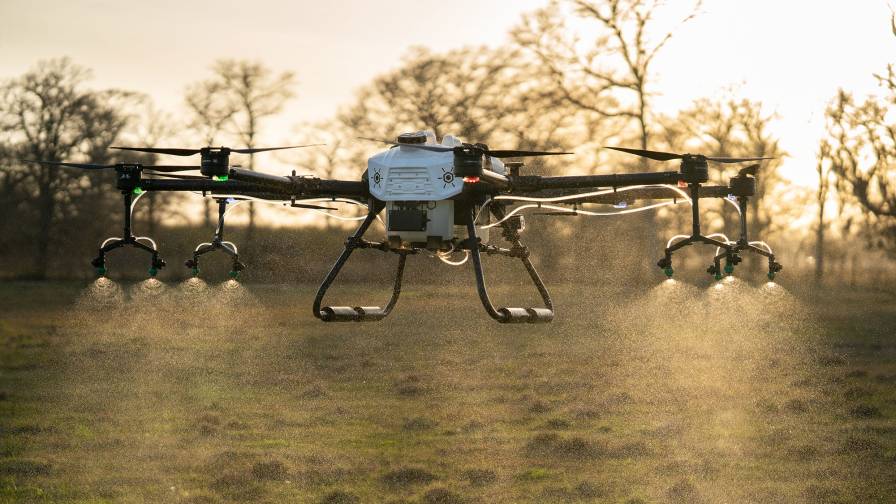6 Ways to Protect Agtech From Cybersecurity Threats
The agricultural sector is perhaps the most crucial industry to protect against cyberattacks. Interruptions and data breaches can directly affect the supply chain, leading to hungry people and animals. If you rely on agtech to run your farm or ranching operation, you must keep network security at the forefront of your mind.
What Is Agtech?
The earliest forms of agricultural technology — also known as agtech — were irrigation, weather forecasting, and machinery. Today, agtech encompasses everything from drones that monitor cattle to smart greenhouse systems that control temperature, humidity, and lighting. Investments in the agtech industry grew 600% between 2014 and 2020, and there’s no sign of the growth slowing down.
Why Agtech Cybersecurity Is Crucial
Many agtech devices are IoT-connected and constantly communicate with the internet. This hyperconnectivity offers numerous advantages. For example, farmers can remotely assess African swine fever transmission — which is most often fatal — in their pigs to stop the disease from spreading. They can view trends in soybean growth over time and subtly adjust their fertilizer use accordingly, sharing this information with neighboring farmers.
But this hyperconnectivity also opens farmers and ranchers up to cyberattacks. Selling seeds online can potentially expose customers’ credit card information, for instance. As long as some or all of a farmer’s business is online, it’s vulnerable to hacking.
MORE BY JANE MARSH
How to Protect Your Farm Against Cybercrime
From November 2020 to October 2021, the agriculture sector suffered 243 separate cybersecurity incidents. The odds may be in your favor, but online crime can happen to anyone. Here’s how to protect yourself and your business.
1. Use Strong Passwords
Set strong, hard-to-guess passwords that contain a mix of uppercase and lowercase letters, symbols and numbers. Or, instead of a password, use a passphrase — a long string of words — to keep your data even more secure.
Consider using a password generator that automatically creates encrypted passwords and stores them for you. Additionally, you should use different passwords for every account.
2. Watch out for Phishing
Everyone receives phishing emails at one point or another. If you get a poorly written message claiming you won money, need to change your bank account info or have to add your address to a shipping order that didn’t go through, be on high alert.
Such messages are often scams from people trying to gather your data. Or, they may contain a link that installs malware when you click on it, compromising your computer’s security. Consider disabling hyperlinks in incoming emails from unknown sources. You can also add a banner to emails coming from unknown senders.
Another hallmark of phishing scams is a sense of urgency — “Act now! You’re in trouble with the IRS!” — but real emergencies with your bank or the government will likely prompt a phone call, text or letter in the mail in addition to an email.
3. Enable Two-Factor Authentication
Two-factor authentication requires you to input a temporary code from your phone or another device when logging into a network. That way, even if hackers crack your password, they’d also need to steal your phone to break into your account. That’s a tall order, even for seasoned cybercriminals.
4. Keep File Backups
Regularly back up your critical files to the cloud or a hard drive, and turn on auto-backups to streamline the process. It’s also a good idea to print paper copies of vital documents in the event of a network breach or power outage because it will allow you to continue operating until you fix the security issue.
5. Allow Regular Updates
Turn on automatic updates for all software, firmware and operating systems if that’s an option. Updates often include patches that bolster cybersecurity. Additionally, ensure only people with admin privileges can install new software on your network.
6. Work Safely
Always perform business transactions involving sensitive data from a secure network, never public Wi-Fi. Unsecured networks allow people to intercept your connection and access the contents of your device. That means they can steal usernames, passwords and financial information.
Protecting Your Farm Against Online Threats
You must employ strong cybersecurity measures if you have IoT-connected agtech devices or use the internet for commerce. Keep an eye out for phishing scams, use strong passwords, update software regularly and back up your files.
These practices will allow you to get back to what you really love to do — work outside on the farm. After all, that’s what your business is all about at the end of the day.










